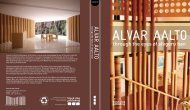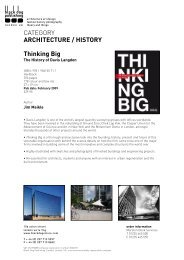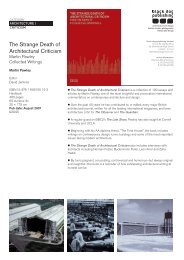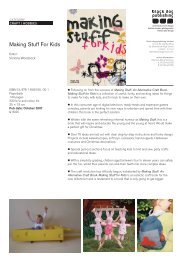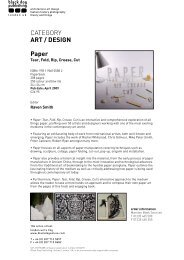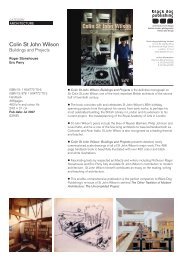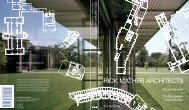a survey of drawing - Black Dog Publishing
a survey of drawing - Black Dog Publishing
a survey of drawing - Black Dog Publishing
You also want an ePaper? Increase the reach of your titles
YUMPU automatically turns print PDFs into web optimized ePapers that Google loves.
The Drawing Book [8.0] 21/10/05 11:24 Page 50<br />
MEASUREMENT<br />
50<br />
Borders can show where to cross or where to turn back. The border<br />
between a <strong>drawing</strong> and the rest <strong>of</strong> the world is the edge <strong>of</strong> the paper,<br />
and <strong>of</strong> course there is a sense in which a <strong>drawing</strong>’s image must turn<br />
back when it reaches that edge. The artist’s pencil can crowd right<br />
up to the last millimeter <strong>of</strong> paper, yet the more insistently it does so<br />
the more clearly it demonstrates the effectiveness <strong>of</strong> <strong>drawing</strong>’s<br />
particular kind <strong>of</strong> border.<br />
Carter Radcliff, Drawing Distinctions: American Drawing <strong>of</strong> the Seventies<br />
Eva Hesse<br />
Untitled, 1966<br />
ink and pencil on paper<br />
30 x 23 cm<br />
Eva Hesse<br />
Untitled, 1969<br />
ink, gouache and pencil on paper<br />
59 x 45 cm<br />
The work <strong>of</strong> American artist Eva Hesse in the 1960s utilised primary forms in<br />
a manner unique to her; the eccentric abstraction <strong>of</strong> her simple shapes<br />
demonstrates a more intuitive, sensuous approach than that <strong>of</strong> the more formal<br />
experiments <strong>of</strong> her contemporaries.




